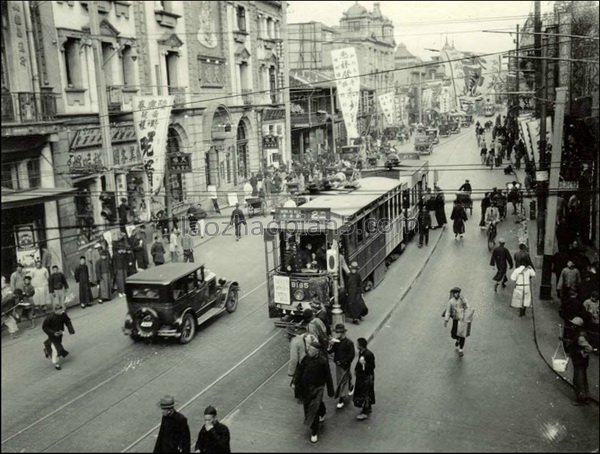Period:Ming dynasty Production date:1600-1644 (circa)
Materials:porcelain
Technique:glazed, carved, applied,
Dimensions:Height: 26 centimetres
Description:
Figure of Lu Dongbin covered with a ‘qianbai’ glaze. This figure has been made in a two-part mould, the vertical joins of which are visible at either side, with applied and carved details added before a ‘qingbai’ glaze. Air escaping during the firing process has caused dozens of tiny flaws in the glaze. The figure is of a bearded man, seated at ease on a rock. He is dressed in a round-necked robe with a faint impressed floral design, secured by a long sash at the waist, trousers and simple shoes. His hat has trailing bands and is folded to a pleated crown. One hand rests on the rock and in the other he holds the handle of a fly whisk, now missing. Strapped to his back is a large sword in its scabbard. The hat has been repaired.
IMG
![图片[1]-figure BM-OA+.939-China Archive](https://chinaarchive.net/Ming dynasty/Ceramics/mid_00256446_001.jpg)
Comments:Harrison-Hall 2001:The figure represents Lu Dongbin, one of the Eight Daoist Immortals, with his attributes: his demon-slaying sword and fly whisk. Lu Dongbin is based on a historical figure from the Tang dynasty called Lu Yan, whose 字 ‘zi’ [name] was Dongbin (c. 790-862). He lived in Shanxi province and served in a semi-official capacity in the literature department at the Tang court. Later in legends he became a popular ‘xian’ [immortal]. Legend held that Lu fought the various evils of the world, overcoming ten temptations, and was awarded a magic sword to defeat them. He enlightened ordinary people in the ways of attaining immortality. In woodblock prints of the late sixteenth and early seventeenth centuries, such as an edition of the ‘Liexian Zhuan’, reprinted in Huizhou by Wang Yunpeng with a preface dated 1600, he is shown as here with a long garment tied with a sash and pleated hat and with a sword strapped to his back.Models of similar figures were also cast in bronze but the fluidity of both owes much to contemporary Ming painting. Figures of this type were manufactured in great quantities at the Dehua kilns in Fujian province. This rare Jingdezhen example follows the tradition of figural sculpture which was established there in the Song and Yuan dynasties (see BM 1985.0717.1).
Materials:porcelain
Technique:glazed, carved, applied,
Dimensions:Height: 26 centimetres
Description:
Figure of Lu Dongbin covered with a ‘qianbai’ glaze. This figure has been made in a two-part mould, the vertical joins of which are visible at either side, with applied and carved details added before a ‘qingbai’ glaze. Air escaping during the firing process has caused dozens of tiny flaws in the glaze. The figure is of a bearded man, seated at ease on a rock. He is dressed in a round-necked robe with a faint impressed floral design, secured by a long sash at the waist, trousers and simple shoes. His hat has trailing bands and is folded to a pleated crown. One hand rests on the rock and in the other he holds the handle of a fly whisk, now missing. Strapped to his back is a large sword in its scabbard. The hat has been repaired.
IMG
![图片[1]-figure BM-OA+.939-China Archive](https://chinaarchive.net/Ming dynasty/Ceramics/mid_00256446_001.jpg)
Comments:Harrison-Hall 2001:The figure represents Lu Dongbin, one of the Eight Daoist Immortals, with his attributes: his demon-slaying sword and fly whisk. Lu Dongbin is based on a historical figure from the Tang dynasty called Lu Yan, whose 字 ‘zi’ [name] was Dongbin (c. 790-862). He lived in Shanxi province and served in a semi-official capacity in the literature department at the Tang court. Later in legends he became a popular ‘xian’ [immortal]. Legend held that Lu fought the various evils of the world, overcoming ten temptations, and was awarded a magic sword to defeat them. He enlightened ordinary people in the ways of attaining immortality. In woodblock prints of the late sixteenth and early seventeenth centuries, such as an edition of the ‘Liexian Zhuan’, reprinted in Huizhou by Wang Yunpeng with a preface dated 1600, he is shown as here with a long garment tied with a sash and pleated hat and with a sword strapped to his back.Models of similar figures were also cast in bronze but the fluidity of both owes much to contemporary Ming painting. Figures of this type were manufactured in great quantities at the Dehua kilns in Fujian province. This rare Jingdezhen example follows the tradition of figural sculpture which was established there in the Song and Yuan dynasties (see BM 1985.0717.1).
© Copyright
The copyright of the article belongs to the author, please keep the original link for reprinting.
THE END




![[Qing Dynasty] British female painter—Elizabeth Keith, using woodblock prints to record China from the late Qing Dynasty to the early Republic of China—1915-China Archive](https://chinaarchive.net/wp-content/uploads/2022/11/image-191x300.png)
